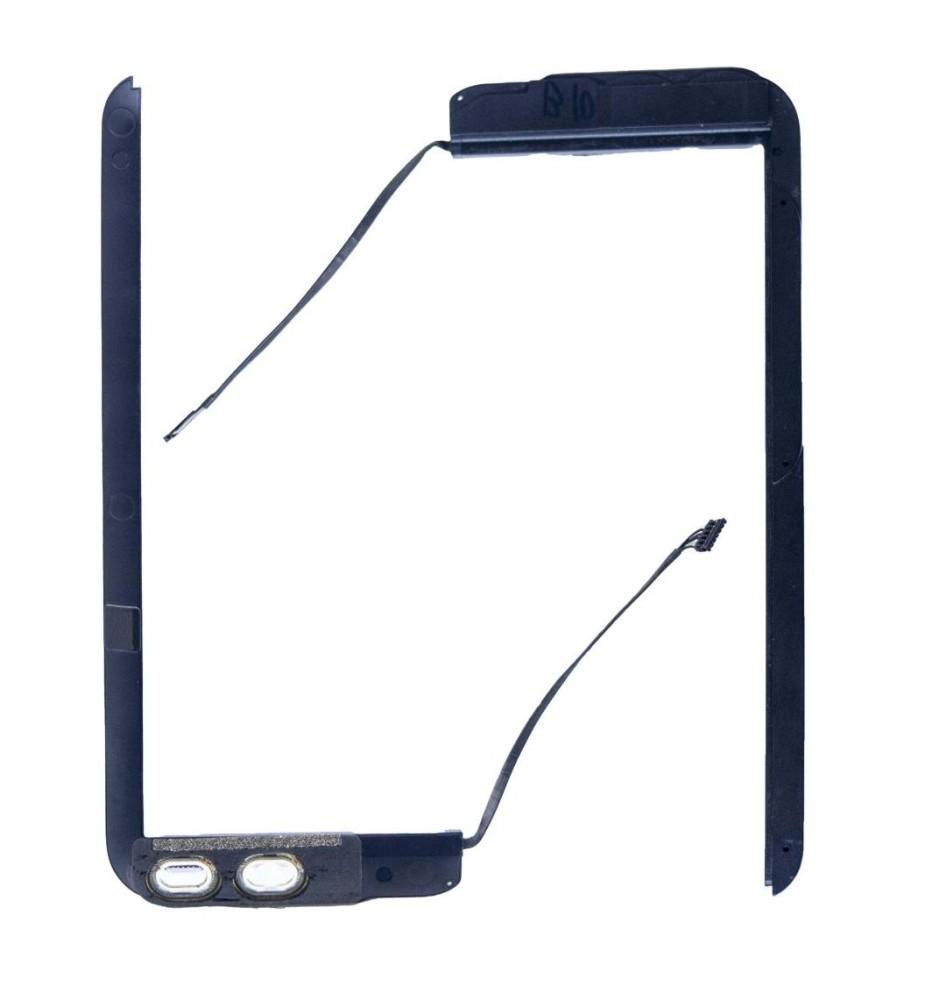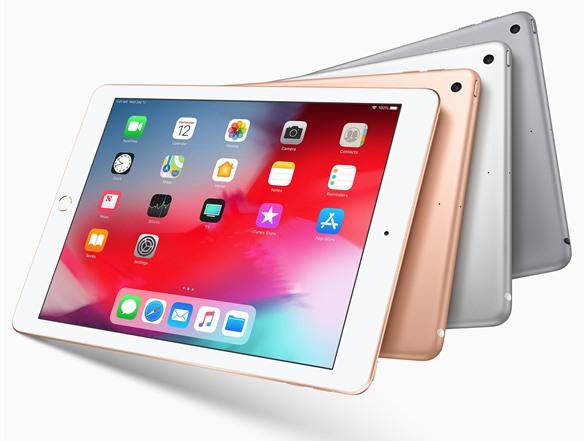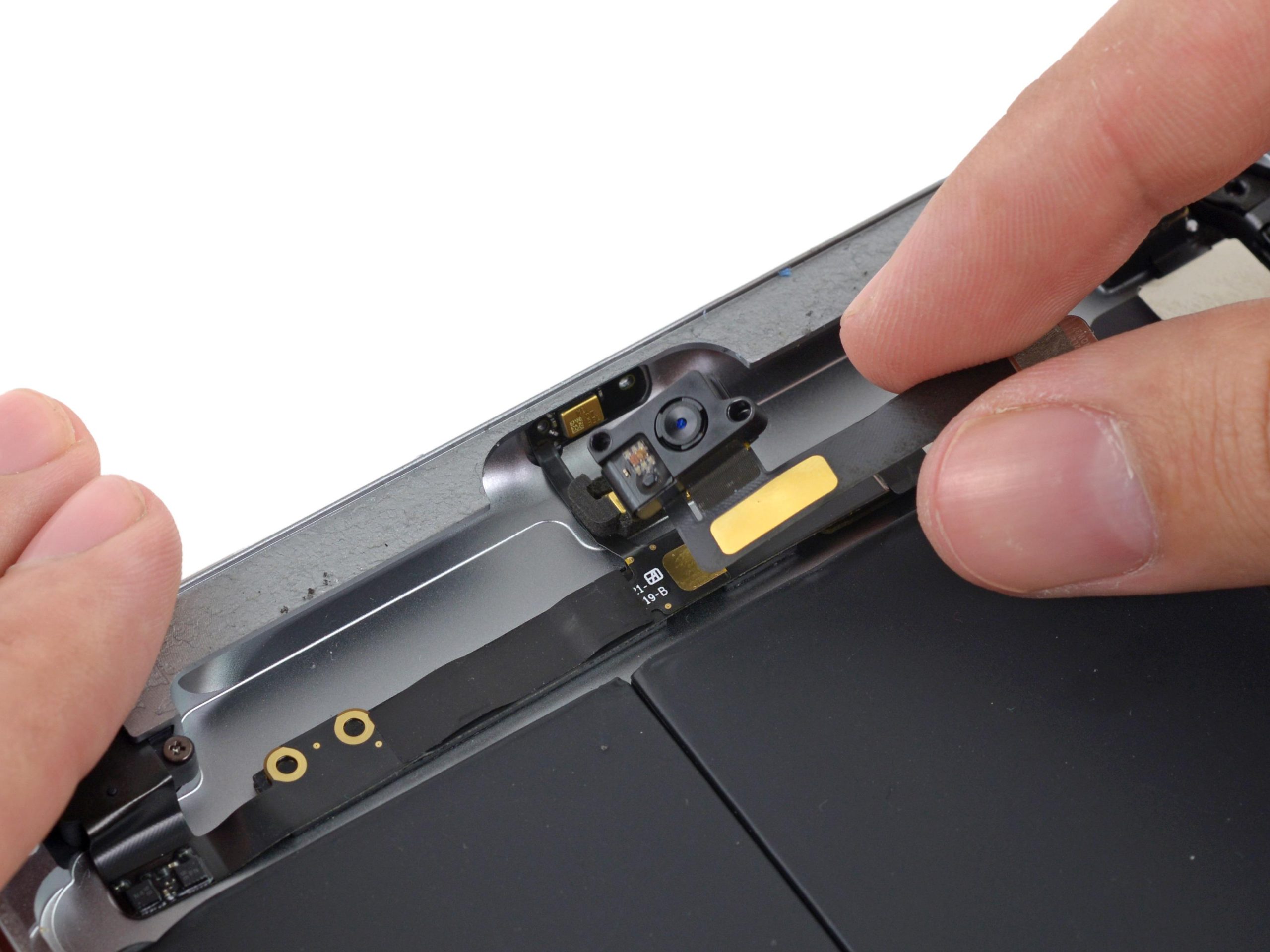How to Replace iPad Wi-Fi Speaker Tutorial
Duration: 45 minutes
Steps: 62 Steps
Hey there! Just a heads up: handling your device can be a bit tricky, so make sure you’re taking all the right precautions. If you feel a bit lost or overwhelmed, don’t hesitate to reach out for some extra support. Remember, if you need help, you can always schedule a repair. You’ve got this!
Ready to bring your sound back to life? This guide will walk you through the steps to swap out that speaker like a pro. Let’s get started and make your device sing again!
Step 1
It’s a good idea to give your microwave a little TLC before diving in, as any leftover gunk at the bottom might just hitch a ride on the iOpener.
– Pop the iOpener right in the middle of the microwave and let it warm up!
Tools Used
Step 2
Keep an eye on that iOpener during your repair adventure! Too much heat can make it pop, and nobody wants that. Aim for a cozy temperature under 100˚C (212˚F).
If your iOpener looks a bit puffed up, give it some space—don’t touch it!
If the middle of your iOpener is still feeling like a hot potato, keep using it while it cools down a bit more before you reheat. A well-heated iOpener should stay warm and ready for action for about 10 minutes.
– Give that iOpener a warm-up in the microwave for thirty seconds. It’s like a cozy spa day for your repair tool!
– As you work through the repair, keep that iOpener nice and toasty by popping it back in the microwave for another thirty seconds whenever it starts to cool down. Let’s keep the heat going!
Tools Used
Step 3
Caution: The iOpener gets super toasty, so handle with care! Grab an oven mitt if you need a little extra protection.
– Carefully take the iOpener out of the microwave, grabbing it by one of the flat ends to keep your fingers safe from the warm center.
Tools Used
Step 4
Don’t have a microwave? No problem! Just follow this step to warm up your iOpener using some good old-fashioned boiling water.
– Grab a pot or pan and fill it up with enough water to give your iOpener a nice, cozy bath.
– Turn up the heat and bring that water to a rolling boil. Once it’s bubbling away, go ahead and turn off the heat.
– Carefully drop your iOpener into the hot water and let it soak for 2-3 minutes. Make sure it’s fully submerged so it can get nice and toasty.
– Using some tongs (safety first!), pull out the heated iOpener from the water.
– Give your iOpener a good towel dry, because nobody likes a soggy tool.
– And voilà! Your iOpener is all set and ready to rock! If it needs a little extra warmth later, just repeat the process: heat the water to a boil, turn off the heat, and let it soak for another 2-3 minutes.
Tools Used
Step 5
Put on those snazzy safety glasses to keep your peepers safe, and watch out for that delicate LCD screen – we want it to stay in one piece!
– Got a cracked display glass? No worries! To keep things from getting any worse and to avoid any accidental ouches during your repair, grab some tape and cover that glass up.
– Start layering clear packing tape over the entire face of your iPad, making sure to overlap the strips. This will help keep everything contained.
– As you dive into the rest of the guide, keep in mind that once the glass is broken, it might just want to keep cracking. Don’t be surprised if you need a metal prying tool to help scoop out those pesky shards.
Step 6
Just a heads up: when dealing with broken glass, it’s a smart move to rock some safety glasses! They’ll keep those pesky shards from flying your way while you work your magic.
– Place the iOpener flat along the right edge of your iPad, making sure to smooth it out for a snug fit. We want that cozy contact between the iPad’s surface and the iOpener!
– Give the bag a little time to work its magic on the iPad—about 90 seconds should do the trick—before you dive in to open up the front panel.
Tools Used
Step 7
Getting that snug little tip of the opening tool in between the glass and plastic might take a bit of elbow grease. Just take your time and keep it cool—wiggle that plastic tool gently back and forth as needed, and you’ll be on your way to success!
– You’ll notice a tiny little gap in the iPad’s adhesive ring located in the upper right corner, about 2.0 inches (~5 cm) down from the top. Let’s take advantage of this little opening!
– Position your tool right by the mute button. Gently slide the tip of a plastic opening tool into that gap between the front glass and the plastic bezel. Just insert the very tip—enough to create a little wiggle room.
Step 9
– With the tip of your trusty plastic opening tool snugly nestled between the front glass and the plastic bezel, gently slide a plastic opening pick into that little gap, right next to your plastic opening tool. You’re doing great!
Step 10
– Take out the plastic opening tool from your iPad and gently slide the opening pick further beneath the front glass, aiming for about half an inch deep. You’ve got this!
Step 12
This adhesive is quite the tough cookie, and you might need to give it a little elbow grease. Take your time and be gentle with it!
If you can spot the tip of the opening pick peeking out from under the front glass, give it a gentle tug. While diving this deep with the pick won’t cause any harm, it might leave some sticky adhesive residue on your LCD. Just a heads up!
– While the iOpener warms up the bottom edge, let’s get started on loosening that adhesive on the right edge of your iPad.
– Gently slide the opening pick down the side of the iPad, freeing up the adhesive as you go along.
Tools Used
Step 13
You might want to slide that warm iOpener back to the right edge of the iPad as you peel away the adhesive. Just keep in mind, this little dance depends on how long your iPad has been chilling while you’ve been working your magic.
– If your trusty opening pick is feeling a bit stuck in that sticky adhesive, just give it a little ‘roll’ along the side of the iPad. Keep at it, and you’ll break free that adhesive in no time!
Tools Used
Step 14
– Before you dive in and pull out that first opening pick from the bottom corner of the iPad, slide a second pick under the right edge of the front glass. This little buddy will help keep the adhesive from sticking back down. Smart move!
– Give your iOpener a quick reheat, then place it at the top edge of the iPad. Let’s keep things nice and toasty!
Tools Used
Step 15
Hey there! The Wi-Fi antenna is snugly secured to the bottom right edge of the iPad’s rear case with screws and a cable. Since the antenna’s orientation is a bit tricky, remember to take it slow and steady—rushing might lead to some bummer damage that you definitely don’t want!
– Alright, folks! Let’s tread carefully for the next few steps. We’re diving into some delicate territory here.
– It’s time to gently free the adhesive holding the antenna to the front panel. Just remember, we want to keep the fragile bits connecting the antenna to the bottom of the iPad safe and sound. So, let’s take it step by step and stay focused!
Step 16
Avoid pushing the pick beyond the bottom right corner. You might accidentally poke the Wi-Fi antenna, and we don’t want that!
– Gently glide that opening pick around the bottom right corner of your iPad, freeing up the adhesive like a pro!
Step 17
Be careful as you glide the opening pick along the bottom right edge of the front panel! The Wi-Fi antenna is lurking close to the corner, and if you let the adhesive go wild, you might just sever it. So, take it slow and steady!
Just a friendly tip: don’t pull that pick all the way out from under the front glass! Instead, gently slide it out just enough so that about 1/8″ (3 mm) of the tip stays snugly tucked under the glass. You’ve got this!
– Gently glide the opening pick along the bottom edge of your iPad, and watch as the adhesive gives way over the Wi-Fi antenna. You’ve got this!
Step 18
– After you’ve gracefully navigated past the Wi-Fi antenna (that’s about 3 inches or 75 mm from the right edge, right by the home button), slide that trusty opening pick back in all the way.
– Now, give that pick a little nudge to the right, and watch as the adhesive holding the Wi-Fi antenna to the front glass gives way!
Step 19
Keep the iOpener’s heating session to a cool minute max, and be sure to give it a breather for at least two minutes before the next round of warmth. You got this!
– Keep on gently peeling away the adhesive along the bottom of your iPad. As you work, slide the opening pick out far enough to navigate around the home button. Once you’ve passed that button, pop the pick back in to about a 1/2 inch (10 mm) deep. You’re doing great!
Tools Used
Step 20
– Keep on peeling that adhesive along the bottom edge of the iPad until it’s all gone!
– Just a heads up, leave the opening pick snugly under the front glass near the home button for now.
Step 22
If your adhesive is feeling a bit too cool, just pop the iOpener back on along the top edge and keep at it. And if the iOpener itself has cooled down, give it a little reheat and you’re good to go!
– Gently glide the opening pick along the top edge of your iPad, giving it a little tug to maneuver around the front-facing camera bracket.
– This part has some super sticky adhesive, so you might need to apply a bit of muscle. Just take your time and be careful—no one wants to accidentally harm themselves or their beloved iPad!
– If your opening pick seems to be stuck in the adhesive, try ‘rolling’ it as shown in step 9.
Tools Used
Step 23
If the adhesive is feeling nice and toasty, go ahead and take the iOpener off the iPad for easier handling. But if it’s still clinging on like a stubborn puppy, just give the iOpener another little warm-up and rest it on the left edge while you work your magic.
– Keep peeling back that adhesive along the top edge of your iPad, and gently slide the opening pick around the top left corner. You’re doing great!
Tools Used
Step 24
The digitizer cable is hanging out about 2 inches (50 mm) from the bottom of your iPad. When you’re about 2.25 inches (60 mm) from the bottom, it’s time to hit the brakes on that pick sliding action!
– Gently slide that trusty opening pick down the left edge of your iPad, and watch as the adhesive gives way like a champion! The adhesive here is pretty thin, thanks to the digitizer hanging out along the whole left side. Just a friendly reminder: keep that pick no deeper than 1/2 inch (10 mm) to avoid any mishaps with the digitizer. You’ve got this!
Step 25
Be cautious! The digitizer cable is just about an inch (25 mm) away from the bottom of the iPad. Take your time and be gentle to avoid cutting this cable. You’ve got this!
– With the trusty opening pick still nestled beneath the iPad’s bottom edge, gently coax the adhesive away from the bottom left corner. You’re almost there!
Step 26
– Grab an opening pick and gently lift the bottom right corner of your iPad. Once it’s up, hold it steady with your fingers like a pro!
Step 27
Watch out for any sticky adhesive that might still be hanging on! Grab an opening pick and carefully slice through any remaining adhesive that could be keeping the front panel in place.
– Grab your iPad by the top and bottom right corners, and gently twist the front glass away from the device. You’ve got this!
– When you’re putting everything back together, take a moment to use a microfiber cloth and some compressed air to wipe away any pesky dust or fingerprints from the LCD before you seal it up with the glass. A clean screen is a happy screen!
Step 28
– Unscrew the four 2 mm Phillips #00 screws that are holding the LCD to the aluminum frame. You’ve got this!
Step 29
– Grab your trusty plastic opening tool or spudger and gently lift the right edge of the LCD out of the iPad. It’s like a little dance—be gentle but firm!
– Now, give that LCD a smooth rotation along its left edge and let it rest comfortably on top of the front panel. You got this!
Tools Used
Step 30
– With the spudger in hand, gently lift up the tape that’s keeping the LCD ribbon cable connector under wraps. You’re doing great!
Tools Used
Step 31
– Gently lift the retaining flap on the LCD ribbon cable ZIF connector.
– With a little finesse, use your fingers or some tweezers to carefully pull the LCD ribbon cable out of its socket on the logic board.
Step 32
– Gently lift the LCD away from the front panel without touching its surface. You’ve got this!
Step 33
If needed, gently lift the tape that’s holding the digitizer ribbon cable snug against the logic board.
– Gently lift the retaining flap on both of the ZIF connectors for the digitizer ribbon cable.
Step 34
– Grab your trusty spudger and gently slide the flat end underneath the digitizer ribbon cable to break that adhesive seal. You’re doing great!
– Now, with a steady hand, carefully pull the digitizer ribbon cable straight out of its cozy sockets on the logic board. Nice and easy does it!
Tools Used
Step 35
– Gently lift the digitizer ribbon cable and grab your trusty spudger to carefully loosen the adhesive that’s keeping the cable stuck to the back of the aluminum case.
Tools Used
Step 36
– With a gentle tug from your fingers, ease the digitizer ribbon cable out of its cozy spot in the aluminum frame.
– Carefully detach the front panel from the iPad, and let the adventure continue!
Step 37
If you see any pesky bits of electrical tape hiding the Wi-Fi antenna, speaker cable, or dock connector cable, go ahead and peel those off!
Step 38
Remember to gently pry under the connector, not the socket itself. Giving the socket a tug could lead to some serious damage, and we definitely don’t want that!
– Unplug the following connectors from their cozy spots on the logic board:
Step 39
– Gently peel back that piece of electrical tape hiding the headphone jack assembly cable connector. It’s time for a little reveal!
– With the tip of your trusty spudger, lift up the retaining flap on both ZIF connectors that hold the headphone jack cable to the logic board. You’re almost there!
Tools Used
Step 40
– Gently slide the flat end of a spudger under the headphone jack assembly cable to free it from the sticky grip of the rear aluminum frame.
– Carefully pull the headphone jack assembly cable straight out from its cozy spot on the logic board.
Tools Used
Step 41
– Let’s get started by taking out those four screws that are holding the logic board snugly to the rear aluminum panel. You’ve got this!
Step 42
– Gently pop the logic board out from the back of your iPad. You’ve got this!
Step 43
Handle that battery with care! You definitely don’t want to poke or harm it while taking it out of your iPad. Remember, batteries hold some not-so-friendly chemicals that could cause trouble if they escape into the wild. Stay safe and keep those batteries happy!
Step 44
The adhesive is super strong! Getting it loose will take some serious effort. Take your time and be cautious, ensuring that the

























































































